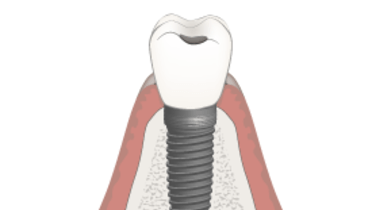-
0
Patient Assessment
- 0.1 Patient Demand
- 0.2 Anatomical location
-
0.3
Patient History
- 2.1 General patient history
- 2.2 Local history
-
0.4
Risk Assessment
- 3.1 Risk Assessment Overview
- 3.2 Age
- 3.3 Patient Compliance
- 3.4 Smoking
- 3.5 Drug Abuse
- 3.6 Recreational Drug and Alcohol Abuse
- 3.7 Condition of Natural Teeth
- 3.8 Parafunctions
- 3.9 Diabetes
- 3.10 Anticoagulants
- 3.11 Osteoporosis
- 3.12 Bisphosphonates
- 3.13 MRONJ
- 3.14 Steroids
- 3.15 Radiotherapy
- 3.16 Risk factors
-
1
Diagnostics
-
2
Treatment Options
-
2.1
Treatment planning
- 0.1 Non-implant based treatment options
- 0.2 Treatment planning conventional, model based, non-guided, semi-guided
- 0.3 Digital treatment planning
- 0.4 NobelClinician and digital workflow
- 0.5 Implant position considerations overview
- 0.6 Soft tissue condition and morphology
- 0.7 Site development, soft tissue management
- 0.8 Hard tissue and bone quality
- 0.9 Site development, hard tissue management
- 0.10 Time to function
- 0.11 Submerged vs non-submerged
- 0.12 Healed or fresh extraction socket
- 0.13 Screw-retained vs. cement-retained
- 0.14 Angulated Screw Channel system (ASC)
- 2.2 Treatment options esthetic zone
- 2.3 Treatment options posterior zone
- 2.4 Comprehensive treatment concepts
-
2.1
Treatment planning
-
3
Treatment Procedures
-
3.1
Treatment procedures general considerations
- 0.1 Anesthesia
- 0.2 peri-operative care
- 0.3 Flap- or flapless
- 0.4 Non-guided protocol
- 0.5 Semi-guided protocol
- 0.6 Guided protocol overview
- 0.7 Guided protocol NobelGuide
- 0.8 Parallel implant placement considerations
- 0.9 Tapered implant placement considerations
- 0.10 3D implant position
- 0.11 Implant insertion torque
- 0.12 Intra-operative complications
- 0.13 Impression procedures, digital impressions, intraoral scanning
- 3.2 Treatment procedures esthetic zone surgical
- 3.3 Treatment procedures esthetic zone prosthetic
- 3.4 Treatment procedures posterior zone surgical
- 3.5 Treatment procedures posterior zone prosthetic
-
3.1
Treatment procedures general considerations
-
4
Aftercare
Abutment and material selection, final restoration, posterior zone
Key points
- Screw or cement retain.
- Cement retention requires choosing between custom or prefabricated abutments.
- Screw retention can be achieved by a variety of approaches.
The Choice
Following the placement of an end osseous implant the clinician will need to decide on the choice of retention for the final restoration. When there is a choice one will need to choose from the cement or screw retained options. The advantages and disadvantages have been reviewed in other Treatment Guidelines. In clinical presentations where the implant position allows for desirable access to the the abutment / prosthetic screw without having to compromise esthetics this is a very desirable approach. This can be achieved even in instances with significant deviation from the long axis by utilizing the angulated screw channel design (ASC), or angulated abutments.
When either the implant position is not desirable or the patient and clinician prefer to keep access to the abutment screw not visible a cement approach can be followed.
Abutment considerations in cement retained implant full crowns
Cementing on an implant abutment can be achieved by either using prefabricated abutments of custom abutments. The prefabricated abutments are available in tooth specific formats that replicate the preparation of a natural tooth. These come in mostly metallic forms and allow for the design of anatomically correct tooth replacements.
The custom abutment design allows for the choice of different materials that are either metal, ceramic, or metal connection with ceramic cemented to the them. The choice of which one to use is dependent upon an number of factors including but not limited to: position in the oral cavity, soft tissue profile, adjacent teeth or implants, opposing arch, requirements of material strength, inter arch distance, and the the choice of material for the final restoration. The fabrication of these abutments can be accomplished by conventional impression procedures or scanning of the implant position and orientation thru the use of scan bodies.
Abutment considerations in screw retained implant full crowns
The screw retained restoration can be fabricated either as a one piece restoration (abutment / crown all one piece) or separately. In the latter approach the abutment can be placed and the an abutment level impression made, a provisional can be placed to the abutment at that time. In the one piece final restoration the abutment and final crown may be in various formats: metal ceramic crown, ceramic crown to metal insert that are luted together, or all ceramic. The latter may be problematic in the potential for breakage and wear of the ceramic component that interfaces with the implant connection.
It is also possible to have custom abutments that are then “tapped”, thus using a screw to retain the final restoration to the abutment from a different position. This helps in correcting implant placement issues.


